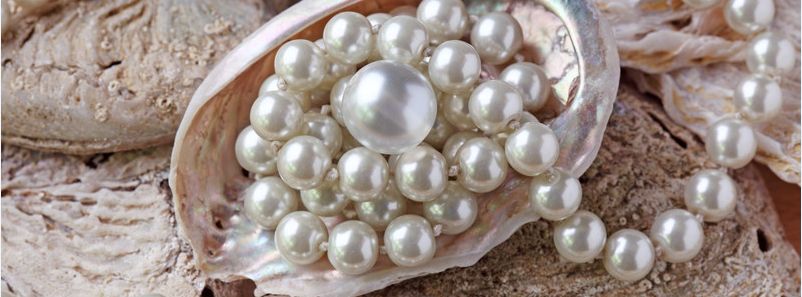How to Tell a Natural Pearl from a Cultured or Imitation Pearl

Wearing pearls are timeless and therefore create the perfect classic look for any occasion on any day whether you wear them to work, on a date, out on the town with friends, or at a formal event. However, can you tell the difference between a natural pearl from an imitation pearl? What about a cultured pearl from a pearl farm compared to a pearl that grew in a natural body of water? Here are a couple of tips to help you distinguish an imitation pearl from the real deal and steps to take when purchasing your next pearl.
Characteristics of a natural pearl
Natural pearls are created in nature with no human interference at all and are considered fairly rare throughout the world. Some of the best places to hunt for pearls include:
- Freshwater pearls in China
- Akoya pearls in Japan, Vietnam, Korea, Australia, and China
- Tahitian or Black South Sea pearls in French Polynesia, The Cook Islands, and Fiji
- South Sea pearls in Australia, Indonesia, the Philippines and Malaysia
Akoya pearls from Asia and Australia are probably the most popular type of natural pearl. Even though they are a type of saltwater pearl, they are very similar to freshwater pearls at a first glance. However, there are noticeable differences in appearance because they tend to be larger, rounder, and have a better luster appearance.
Freshwater pearls are created in mussels and saltwater pearls in oysters in open bodies of water. A foreign substance such as a parasite will invade the shell and the soft tissue of the mussel or oyster. The irritation causes nacre, a crystalline substance, to leak and build up around the irritant to form a pearl. Because they are grown wildly, they will vary from one size to the next and have different shades of luminosity.

How are cultured pearls different?
Imitation pearls are cultured so that they are grown in highly controlled conditions by pearl farmers. Because real pearls are so rare, most commercial pearls that you will find have been cultured at farms. These pearls are created by placing a mussel shell core into another mussel or oyster so that it creates enough irritation to grow a pearl. Cultured pearls are more or less the same size after they are harvested. A cultured pearl may be treated and even bleached by pearl farmers before selling it or adding it to a piece of jewelry.
How to spot an imitation pearl
There are a couple of different ways to tell an imitation pearl from a real pearl by looking closely at the texture. One such method is to actually use your teeth to feel the difference between both types by rubbing the pearl(s) gently along the top of your teeth and gently biting down. Imitation pearls are much smoother than real pearls which will feel gritty and slightly jagged in some surface areas.
Another test is to see if the pearls are real is to rub two pearls together to see if any friction is caused by rough areas. If there is no friction between the two pearls and they easily slide, then most likely they are imitation pearls. You can also use other sensors to observe pearls including touch and sight. Real pearls will also feel heavier when you hold them in your palm than fake pearls and gently rub a pearl between your fingers to tell if they are smooth or not. Use a magnifying glass to closely observe the pearls and you will notice that real pearls will have rings, a body color, and an overtone color if they have been drilled whereas fake pearls will not. Overall, if a pearl appears to be flawless, then most likely it is fake because no real pearl has a surface area that is perfect as far as hue, texture, and size.
Picking out a pearl to buy
Besides distinguishing an imitation and a real pearl, freshwater or saltwater, there are a couple of different categories you should keep in mind when selecting a pearl or set of pearls to purchase. Natural pearls can come in a variety of different colors and luster including a shimmery iridescent sheen effect called “orient.” The different colors of pearls are usually anywhere from white, opaque, rose to a deep gray color. Freshwater pearls can be dyed so it is common to see them being sold as a variety of colors from green to turquoise, pink to red.
As previously mentioned, pearls can come in a variety of different sizes, but they can be sold and bought in different shapes and cuts as well including:
- Teardrop
- Round or semi-round
- Button
- Oval
- Baroque
- Circle
Hopefully this has answered your question of “how is a pearl formed by nature?” and hopefully next time you wish to go pick out a pearl or set of pearls for yourself or someone else, you will know what to look for when it comes to real and imitation pearls.













